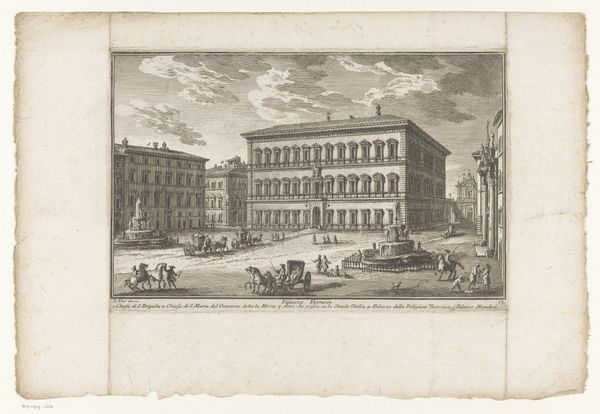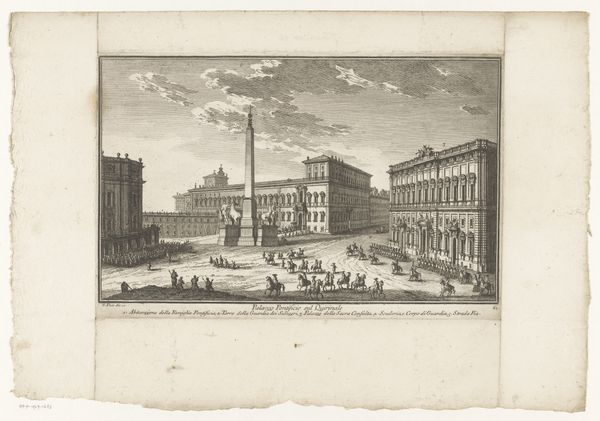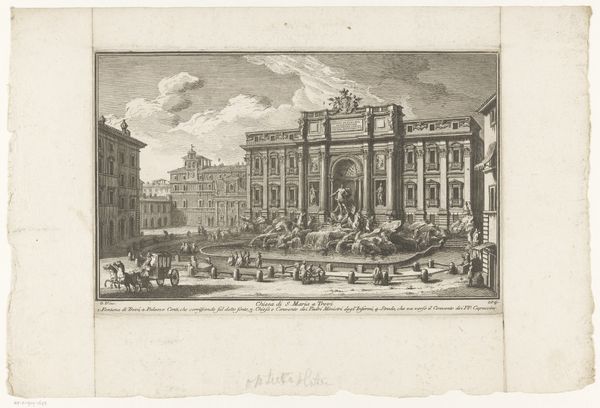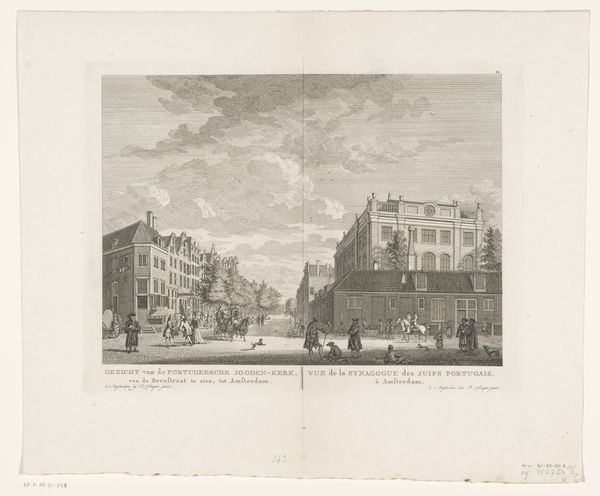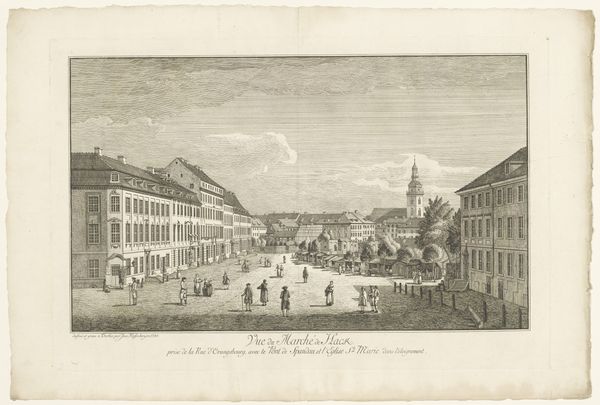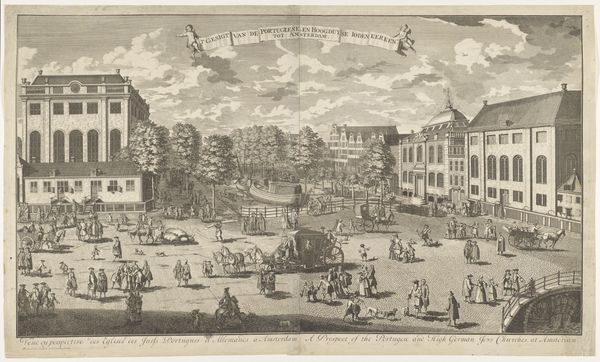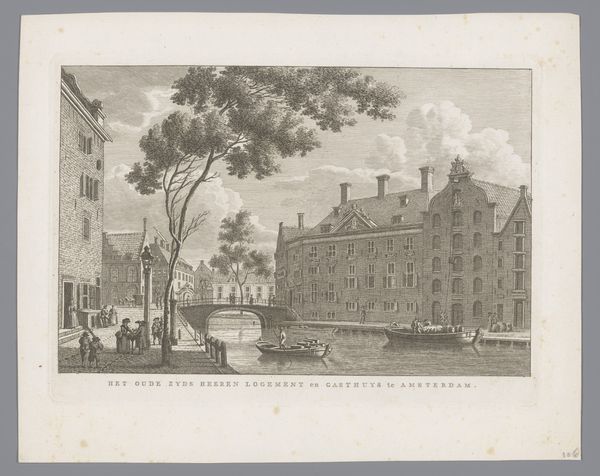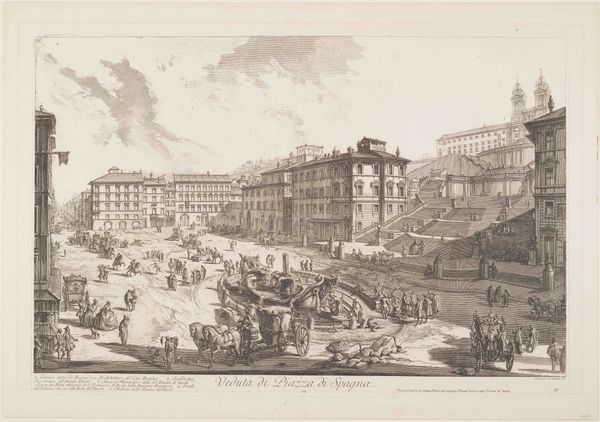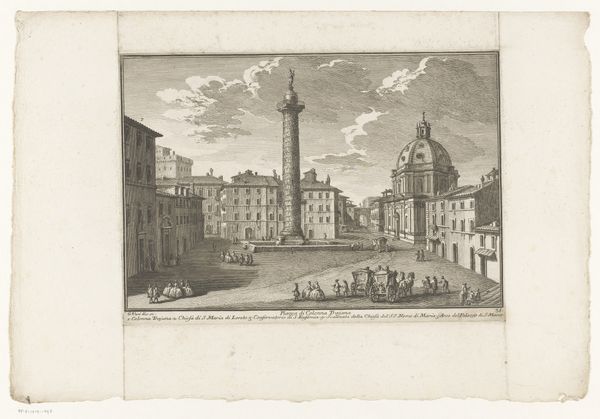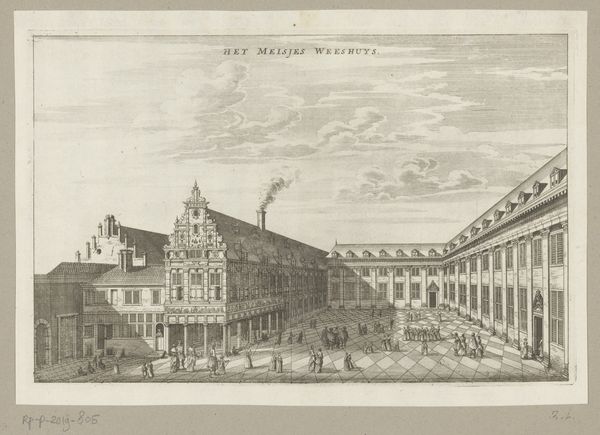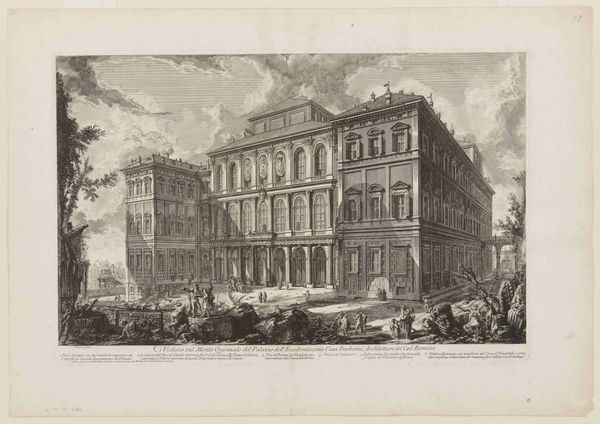
print, engraving
#
aged paper
#
toned paper
#
baroque
#
ink paper printed
#
parchment
# print
#
old engraving style
#
pen-ink sketch
#
cityscape
#
italian-renaissance
#
engraving
Dimensions: height 210 mm, width 302 mm
Copyright: Rijks Museum: Open Domain
Editor: This is "Piazza di Spagna te Rome" by Giuseppe Vasi, dating from 1747 to 1761. It's an engraving, giving the scene a somewhat formal, almost staged, quality. What strikes me is how orderly and structured it feels, despite all the activity. What do you see in this piece? Curator: Order is key. The geometric layout of the piazza itself and the meticulous detail create a powerful sense of civic pride. The buildings surrounding the open space project not just physical boundaries, but symbolic ones, too. Notice how people seem contained in the print as well as in that square? How do you think that confinement is rendered? Editor: I guess it’s partly how small the figures are, and how they're all directed toward the center or the edges, like elements within a bounded system. But I was so focused on that staged quality and not how much it reflects its own cultural boundaries. Curator: Precisely. Now consider this: Baroque art, even in its cityscapes, often conveyed messages of power, religion, and social hierarchy. Think about the cultural symbols implicit in representing Piazza di Spagna. What power dynamics do you believe are suggested here? Editor: Well, there’s the church at the top of the Spanish Steps – Trinità dei Monti – overlooking the square. So that's definitely communicating religious power and its presence within the city. But it's subtle! It's part of the urban fabric... almost taken for granted? Curator: It becomes a permanent reminder, yes, and consider also the obelisk placed in the centre: It serves as both an emblem of prestige and of imperial reach across centuries. Consider, what narratives of wealth, authority and urbanity does Vasi wish to convey by focusing his work here? Editor: This makes me think about how public spaces can serve to both facilitate social interaction and, at the same time, reinforce established structures. Fascinating! I wouldn't have thought about it like this at first glance. Curator: Exactly. Images hold a memory. Vasi's "Piazza di Spagna" presents not only a location but also a narrative about power and order for its viewers, a narrative we, as modern viewers, must continually work to decode.
Comments
No comments
Be the first to comment and join the conversation on the ultimate creative platform.
